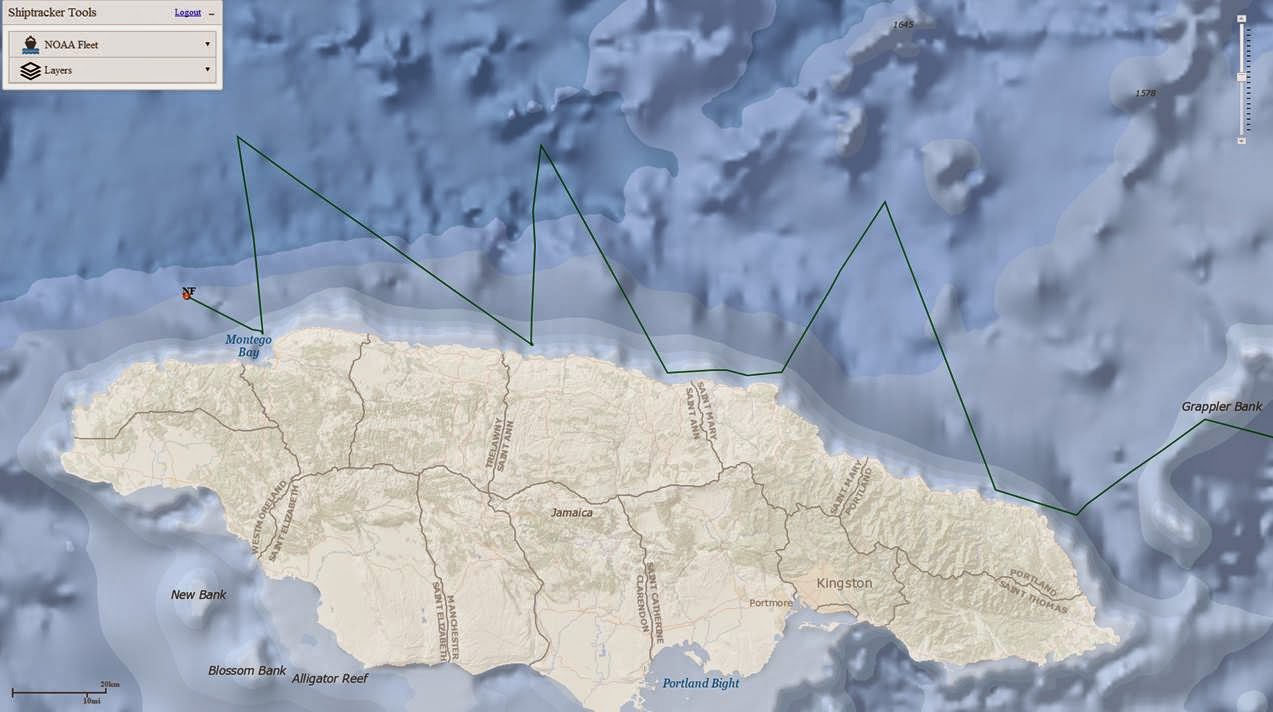 |
Nasheika Guyah, Daniel Scarlett, Camilo Trench, Chauntelle
Green, Sophia Davis, Patrice Francis, Shanna-Lee Thomas & Dr. Dale Webber
|
While in Montego Bay, we hosted another "Open
House" attended by researchers and staff from the University of the West Indies Centre for Marine Sciences-Discovery Bay & Port Royal MarineLaboratories. I asked one of the participants, Ms. Patrice Francis what was her
favorite activity and she responded: “it is difficult to say what our favorite
aspect about the open house was because everything was good.” She especially
enjoyed “the setup of the wet lab and the caliber of instruments on board
especially the MOCNESS and CTD/Niskin rosette.” She also enjoyed the “interaction with the
crew members and getting a view of their roles." As usual, the NOAA Corps officers showed them around the ship and while in the wet-lab, we showed them some fish collected in Jamaican waters that included parrotfish, snapper, tuna, eels and surgeon fish!
 |
| Jamaica sampling stations |
Sampling in Jamaica and surrounding areas will
continue for the next couple of weeks with the next rest stop in Cozumel,
Mexico!
The map above shows you some of
the stations in area that we targeted with collaboration from our University of
West Indies colleagues, especially PhD student Nasheika Guyah! (We will OF
COURSE meet her in the blog later this week).
For now, sampling continues with some additional equipment which I will tell you about later this week!
 |
| During his day off, Grant leaps into the gorgeous blue waters in Negril, Jamaica! |
Our cruise was featured in our our partner NOAA AOML's website and it does a great overview of "leg 1" and talks about leg 2 in their AOML Keynotes
 |
| screenshot of AOML keynotes |










.jpg)

